Slowly but surely, the already larger-than-life Bored Ape Yacht Club (BAYC) is getting bigger — and massively so. These days, new and exciting happenings are being announced on a regular basis. And now Yuga Labs — the company behind BAYC — has started down the path of creating an enormous metaverse endeavor called Otherside.
Initially announced in March 2022, subsequent speculation and a deluge of unconfirmed information made the actual details surrounding the Otherside project fuzzy at best. But this wasn’t too surprising, given the scale of the project. While some may have thought Otherside was just another expansion to the existing BAYC NFT ecosystem, it isn’t at all comparable to secondary collections like the Bored Ape Kennel Club.
This endeavor is a whole new ballgame.
And even though its launch was riddled with hiccups and rather poorly received throughout the greater NFT community, it looks like Otherside is here to stay. With this in mind, here’s everything you need to know.
What is the Otherside project from Yuga Labs?
Otherside is the largest expansion of the Bored Ape NFT universe we’ve ever seen. The NFT space first got a first glimpse into what Yuga Labs was trying to build with Otherside from their leaked 2022 pitch deck. In the deck, the company expressed a desire to “build something that expands the universe of the BAYC but also invites the larger NFT community (and those priced out of BAYC membership) to join.”
The Otherside project is ultimately an MMORPG (Massively Multiplayer Online Role-Playing Game) connected to the BAYC ecosystem. Wondering how the Otherside world and BAYC NFTs fit together? You’re not alone.
The team notes that the game will blend mechanics from MMORPGs and Web3-enabled virtual worlds. Specifically, players own the land in the world, NFTs can be transformed into playable characters, and more than 10,000 people will be able to play together simultaneously.
Otherside will be its own metaverse that will offer an interoperable experience, meaning users will be able to move between metaverses. The project includes prominent NFT collections like Cool Cats, World of Women, CrypToadz, and more. In this respect, this metaverse will be a sort of open-world game, one where collectors can own land and interact with different ecosystems and the unique beings that inhabit them.
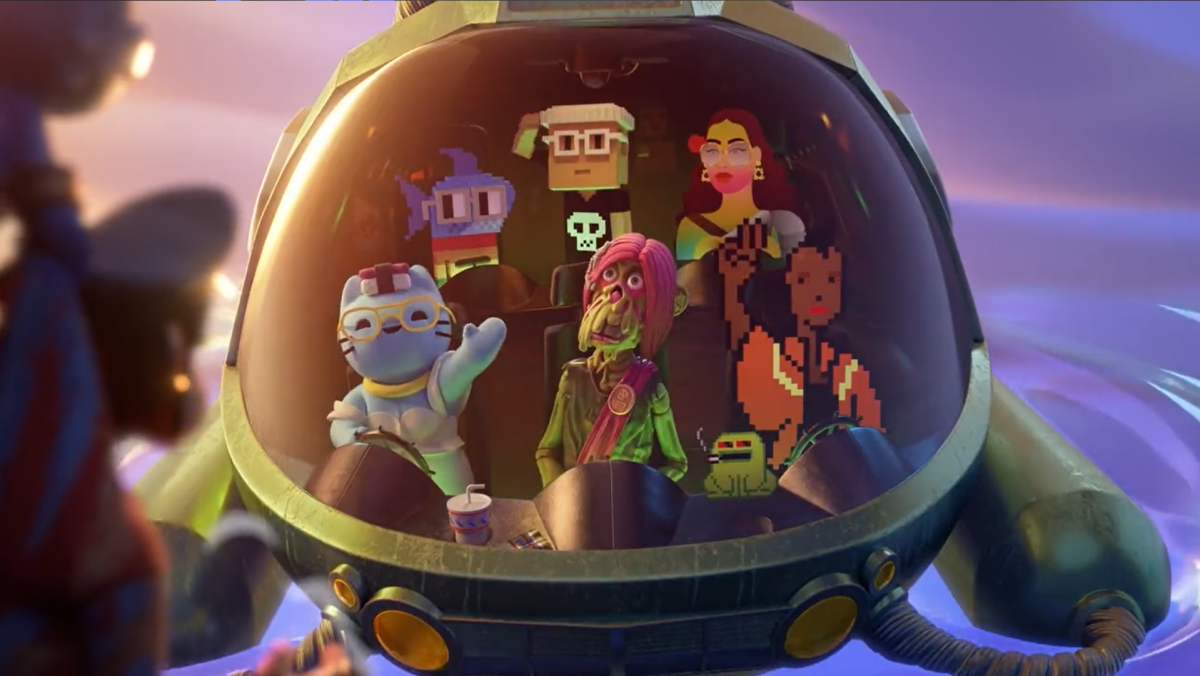
Yuga Labs hasn’t announced everything about how the game will work. But here’s what the team has said so far:
- Multiplayer features will be made possible via Improbable’s M2 technology
- Otherside will include natural voice chat
- They hope to solve problems in bandwidth and rendering “using machine learning”
- Otherside will be able to handle more than half a billion operations per second
- Immersive gameplay will be “supported by AI and physics”
There currently isn’t any other specific information related to the infrastructure or technology. Although Yuga has already completed two “trips” into the playable Otherside metaverse (essentially just closed demos for Yuga NFT holders), the enormity of what’s to come hasn’t been revealed yet.
What we do know so far, though, is that the key to the game will be embedded within the unique ecosystem and the enigmatic Kodas that live within it. Furthermore, the project will tie directly into the ApeCoin ecosystem.
Who created and owns Otherside?
It’s important to note that, at this point in the Bored Ape journey, Yuga Labs isn’t the only entity piloting the ship. Although the four founders of Yuga Labs first came up with the idea for BAYC and were an integral part of bringing the Otherside project to life, a good number of additional companies and individuals are now helping run the show.
Apart from Yuga Labs, the most prominent force behind Bored Apes is now venture-capital firm Andreessen Horowitz (known as “a16z”), who led Yuga Labs’ seed round through their crypto fund. With the funding, Chris Lyons, general partner at a16z crypto, joined Yuga Labs’ board. Other prominent players include Animoca Brands, Improbable, and the ApeCoin DAO.
Animoca Brands is a game software and venture capital company helping build Otherside. Considering Animoca is also the driving force behind the widely popular metaverse game The Sandbox, the Hong Kong-based company has continued solidifying itself as a major player in metaverse endeavors.
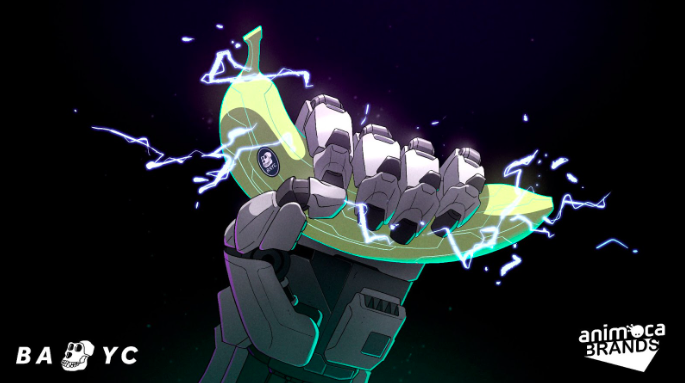
Similarly, Improbable, a British metaverse technology company pioneering new ways to build value across interconnected virtual worlds, has become synonymous with the Otherside project. Meaning that Animoca and Improbable are both joint creators and owners of Yuga Labs’ Bored Ape-centric Otherside.
On the path to Otherside, though, there have been many investors and contributors backing Yuga Labs from the newly launched ApeCoin ecosystem. As the new MMORPG will tie directly into the ApeCoin — which recently expanded as we saw OpenSea and other NFT marketplaces start to accept $APE as a form of payment — it’s clear to see that the ApeCoin DAO, which is the true creator behind the ApeCoin, will largely influence Otherside.
What are Otherdeeds and Kodas?
When it comes to deciphering how Otherside might actually work, one of the best hints to turn to is Otherdeeds. Otherdeeds is a collection of dynamic NFTs that contain all of the game elements. Each Otherdeed comes with a set of resources, and some (very few) include a Koda (more on that later).
Specifically, each piece of land in Otherside has up to four replenishing resources. Users will be able to harvest these resources and use them in the game. Some are rarer than others. They include anima (for research), ore (metal), shard (stone), and root (wood). There are also five sediment types that each land is built upon. Each is assigned a tier. The tiers include Biogenic Swamp (tier 5), Chemical Goo (tier 4), Rainbow Atmos (tier 3), Cosmic Dream (tier 2), and Infinite Expanse (tier 1).

Otherdeeds were launched via public sale on April 30, 2022, as a collection of 55,000 parcels of land. It should be noted, though, that the entire supply of Otherdeeds totals 100,000, with the other 45,000 parcels reserved for Bored Ape NFT holders and Yuga Labs employees and partners.
Rather than presenting a static representation of a piece of land, Yuga Labs designed Otherdeeds to evolve along with what users choose to do in the game. Yet, it’s said that their true potential can only be revealed with time, further adding to the mystery surrounding these digital plots.
Further adding to the complexity of Otherside, within the Otherdeeds ecosystems live Kodas.
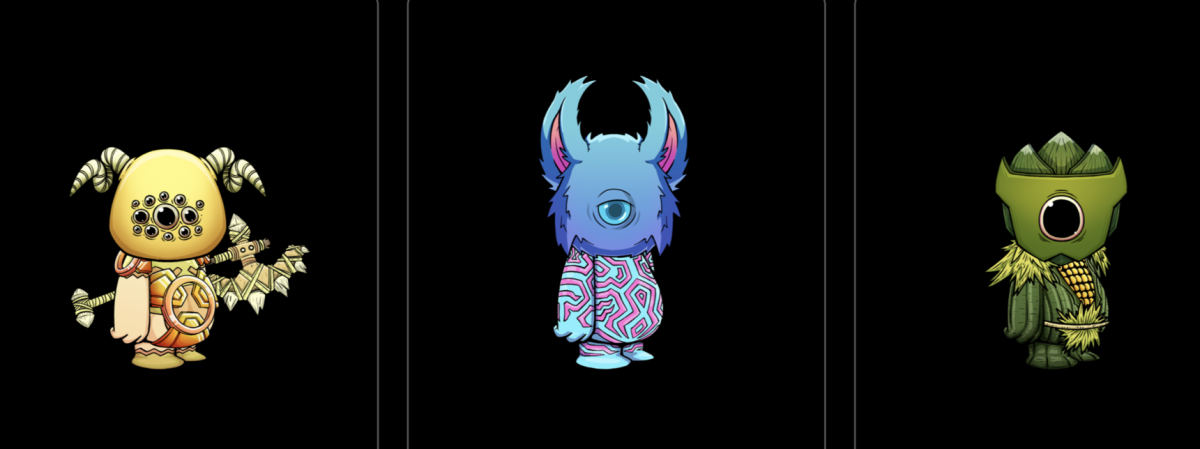
Kodas are beings that Yuga says “have ushered us into the Otherside.” The lore surrounding Kodas is intentionally hazy, as users aren’t meant to know exactly what they are or why they exist — other than that, they have an important connection to the Otherside land. The company stated that anyone who encounters a Koda should be vigilant.
“We don’t know why they’ve brought us here or what their affinity to this land is,” they said. “If you are lucky enough to meet a Koda, tread cautiously.”
To see a full breakdown of how items are listed in the Otherdeed NFTs, see the image below.
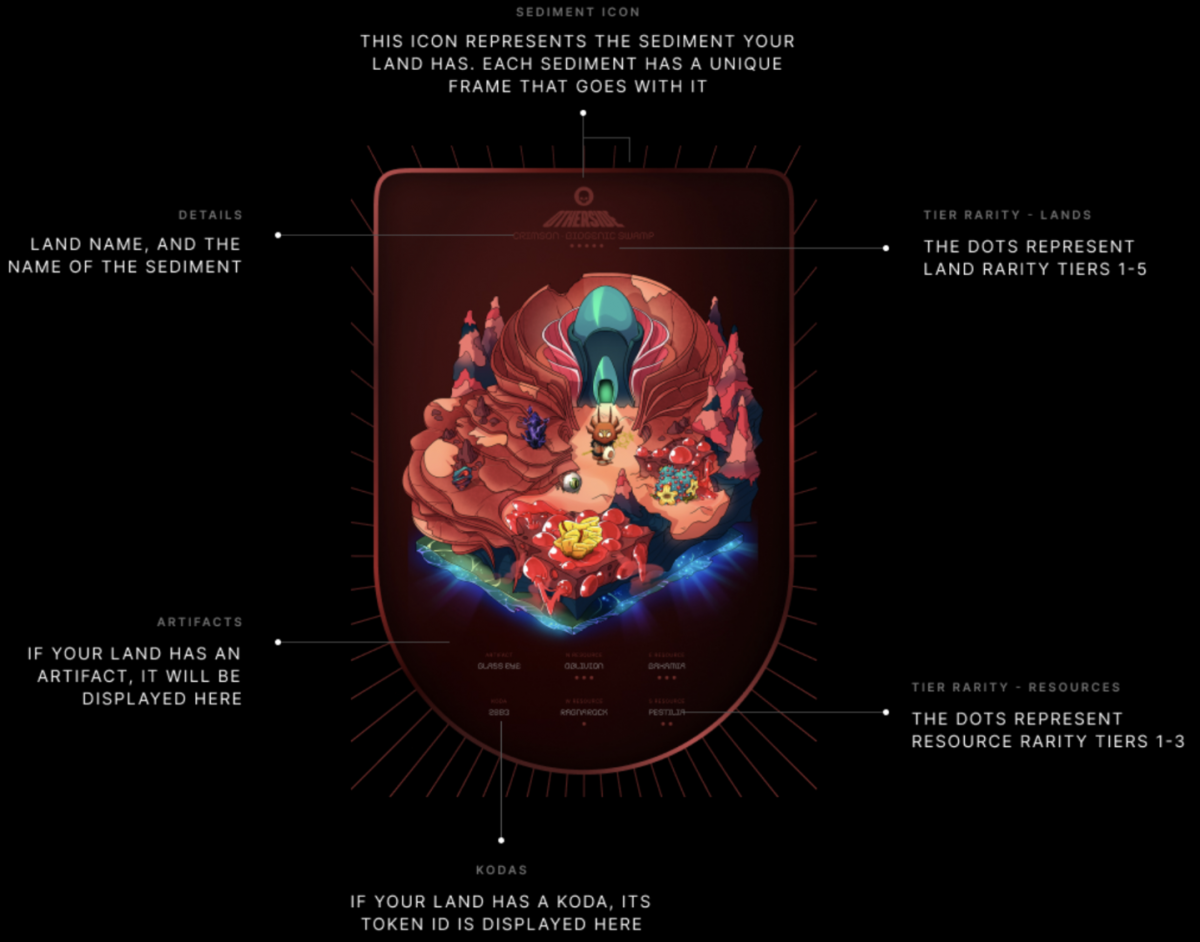
Alongside the initial Otherside land sale that revealed the existence of Kodas, Yuga Labs introduced a visual representation of what the forthcoming MMORPG might look like in the form of an interactive map. With this map, users can explore the open world that the game will likely take place in.
The Otherside NFT land sale
As previously mentioned, though, the Otherdeeds drop did not go off without a hitch. While this isn’t uncommon in the NFT space, the hiccup is still worth noting as a lesson learned for Yuga. Early on, Yuga received backlash from the NFT community over plans to use a Dutch auction — a once common drop mechanic that has many times failed to create equitable project launches. As a result, they decided to switch things up at the last minute. Instead of a Dutch auction, they opted to release Otherdeeds in waves, hoping that limiting the number of NFTs each user could collect would mitigate high gas prices.
The team outlined the mechanics as follows: “At the start of the sale (wave 1), there will be a limit of two Otherdeeds minted per wallet. As soon as gas returns to reasonable levels and the number of wallets minting decelerates, wave two will begin, during which KYCed wallets can mint up to an additional four Otherdeeds. Each increase in the per-wallet limit will be announced on the Otherside official channels.”
With the price of each Otherdeed set at 305 $APE (and $APE valued at around $20 during the mint), each Otherdeed cost somewhere around $6,100 at launch. This excessively high price point didn’t stop anyone from buying. Gas prices failed to dip anywhere below 1 ETH ($2,750 at the time), and fear of missing out (FOMO) led to a free-for-all.
Only NFT investors with tens of thousands of dollars in liquid crypto were able to participate, and countless individuals lost upwards of 1-2 ETH due to failed transactions. It was clear the structure didn’t work. After failing to prevent excessive gas fees, the sale never even reached the second of a proposed five+ waves.
In the days that followed the sale, single Otherside NFTs were priced at around $11,000 on the secondary market. The team raked in more than $300 million in revenue. And although Yuga promised to work out a solution to refund the ETH that many lost to gas fees, it came across as a small consolation to the greater NFT ecosystem.
All in all, the Otherdeeds sale seemingly served to reinforce the idea that NFT drops largely seem broken.
“We’re sorry for turning off the lights on Ethereum for a while. It seems abundantly clear that ApeCoin will need to migrate to its own chain in order to properly scale. We’d like to encourage the DAO to start thinking in this direction,” Yuga said on Twitter.
After the sale was completed and the dust settled, community sentiment seemed to balance out over time. And new conversations were started around the future and utility of Otherdeeds and Otherside.
Otherdeeds licensing
One such conversation was around what “owning” an Otherdeed might actually entail. That is, aside from laying claim to it as a tradable asset. The Otherdeeds secondary market had already experienced substantial growth following the completion of the sale — to date, having generated upwards of 600,000 ETH (over $1 billion) in sales.
A particular discussion focused on the true meaning of “ownership” when it comes to possessing an Otherdeed beyond simply considering it as a transferable asset. But collectors who choose to hold onto their Otherdeeds for the long run must be aware of the licensing behind the new Yuga Labs NFTs.
As outlined in the Otherside NFT Purchase Agreement, when a collector purchases an Otherdeed NFT, that collector owns all personal property rights to that Otherdeed. They have the right to freely sell, transfer, or otherwise dispose of that NFT. What collectors do not receive, though, are the rights of any kind to any image or other intellectual property (IP) associated with, related to, or linked to an Otherdeed.
Of course, the debate around whether or not NFT collectors should be granted the rights to the IP of any tokens they collect is nothing new. We’ve seen numerous prominent Web3 figures fighting for the proliferation of creative commons licenses for NFTs.
Looking further into the Otherside Licensing Agreement, it’s clear Yuga has taken measures to prevent the NFT owners from profiting off of their NFTs. To this effect, the company has stated that collectors can only use Otherdeeds in a personal, non-commercial way, i.e., “home display, display in a virtual gallery or creating a reasonable number of back-up copies and physical printouts.”
Although understandable, clauses such as these feel contrary to the values of the wider BAYC and NFT community. Especially considering that one of the most prominent selling points of BAYC has been the ability of Ape owners to profit off of – and, in some cases, create entire brands surrounding – the IP of the BAYC they own.
Where things get interesting, though, is within the Koda License Agreement. First, in this agreement, “Koda” refers to a non-fungible, unique token on the Ethereum blockchain, aka an NFT. Second, the Koda license is revocable. This means Yuga can revoke the aforementioned personal, non-commercial license granted to NFT owners at any time. Although it’s unlikely this will happen, the fact that it is included incensed some collectors.
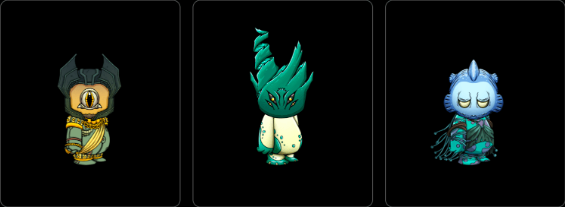
Next, a separate clause prohibits the transfer of Kodas to any individual “located in a country that is subject to a U.S. Government embargo, or that has been designated by the U.S. Government as a terrorist-supporting country, or listed on any U.S. Government list of prohibited or restricted party.”
In the past, the NFT community was up in arms about both Metamask and OpenSea banning Iranian users, and it looks as though Otherside retains the right to do the same. This clause in and of itself brings forth an array of concerns related to centralization and gatekeeping, which run contrary to the ethos of Web3.
Yet, as more U.S.-based NFT brands become popular, we’re sure to see this happen time and time again. The underlying fact is that although projects may grow and thrive off the concept of decentralization when they become full-fledged U.S.-based companies, they must still follow U.S.-based laws.
The future of the Otherside metaverse
Considering Yuga Lab’s extreme levels of success, possibly the most interesting aspect of the Otherside project will be what is to come. As Yuga and its partners have continued to be intentionally cryptic when it comes to all things Otherdeeds and Kodas, the possibilities of what Animoca and Improbable can bring to the table seem unlimited — especially when coupled with the money of Andreessen Horowitz and major brand partnerships (such as a recent one with Gucci).
One thing is clear through all of this, though: Yuga still very much values the Bored Ape and wider NFT communities. Yuga seems to be trying to exude the values associated with BAYC, as they have stated that Otherdeeds holders will be the major builders of Otherside.
Those who own a plot of land or Koda will be able to participate in demos, prototype builds, in-person events, and contests — with Yuga’s Legends of the Mara gamified experience being evidence of this.
While Otherdeed collectors need not have any special or technical knowledge, individuals and companies can apply for a Software Development Kit to be involved in building characters, character skins, structures, in-game items, minigames, and more for Otherside.
If nothing else, the future of Otherside will be collaborative…or so Yuga Labs says.

